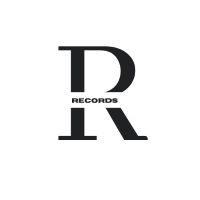I chose to design the Recursive Records website due to my passion for vintage music. The project aims to support a campaign that draws customers to the store by promoting its products, brand, and physical location. To guide my approach, I researched existing record stores to understand how they succeed. Designing a vintage music record website was both challenging and exciting—challenging because meeting deadlines isn’t always my strength, but exciting because I love classic music and was eager to discover new insights. My research revealed that the demand for rare vinyl continues to grow, driven by audiophiles and collectors.
A well-designed website can stand out, effectively guiding vinyl enthusiasts and audiophiles to visit a store with a well-curated selection of rare and vintage records. Vinyl records evoke nostalgia for older generations, while younger listeners are drawn to their retro aesthetic.
The Recursive Records website fosters community engagement by hosting live listening sessions, benefiting both the business and local music lovers. It also serves as a platform to appeal to eco-conscious audiences and preserve music history. However, competition from established platforms remains a key challenge.
The target audience includes audiophiles, music collectors seeking rare vinyl, and retro enthusiasts who appreciate the cultural and aesthetic value of records.
Marketing Strategy
To attract customers, the website features an Events page highlighting local happenings and collaborations with music influencers to strengthen brand identity. Social media integration showcases products, while a focus on quality and rare vinyl cultivates long-term customer loyalty.
Color Choice
The black-and-white color scheme aligns with the nostalgic and retro appeal of vintage vinyl, evoking classic music, film, and photography. This minimalist approach enhances visual clarity, distinguishes the site from cluttered competitors, and emphasizes content. It also reflects the simplicity valued in vinyl culture.
Tools Used
- HTML & CSS for structure and styling, adhering to semantic and visual best practices.
- Canva for logo design and Photoshop for image editing.
- Responsive design ensured mobile compatibility with:html<meta name=”viewport” content=”width=device-width, initial-scale=1.0″>
Accessibility & Best Practices
- ARIA attributes for screen reader compatibility.
- Alt text for images and optimized color contrast.
- SEO optimization with proper
<title>tags, valid HTTP codes, and descriptive links. - High-quality images with correct aspect ratios.
Typography & Imagery
Fonts like ‘Roboto’, ‘Lora’, and ‘serif’ complement the color scheme. Black-and-white vinyl images maintain visual consistency, and the logo aligns with the overall design.
My choice of logo is consistent with the overall colour of the design.

Conclusion
This project deepened my understanding of HTML structure and CSS principles. I learned that consistent practice and perseverance are key to becoming a skilled web designer. CSS is ever-evolving, requiring ongoing learning. Collaboration with peers was invaluable, though my next challenge is mastering JavaScript for enhanced interactivity. While I couldn’t implement all desired JS features this time, I aim to improve in future projects.
Reference
https://musicshop360.com/blog/music-shop-website-design
Sound Matters: A Vinyl Record Website for the Digital Age
https://www.flaticon.com/search?word=youtube%20logo
https://www.alamy.com/stock-photo/vinyl-record-artwork.html?blackwhite=1&sortBy=relevant
Custom 12-inch Vinyl Record
https://thesoundofvinyl.com/products/the-beatles-white-album-vinyl
https://unsplash.com/photos/a-black-and-white-photo-of-a-record-store-P3_MLxr5eBY